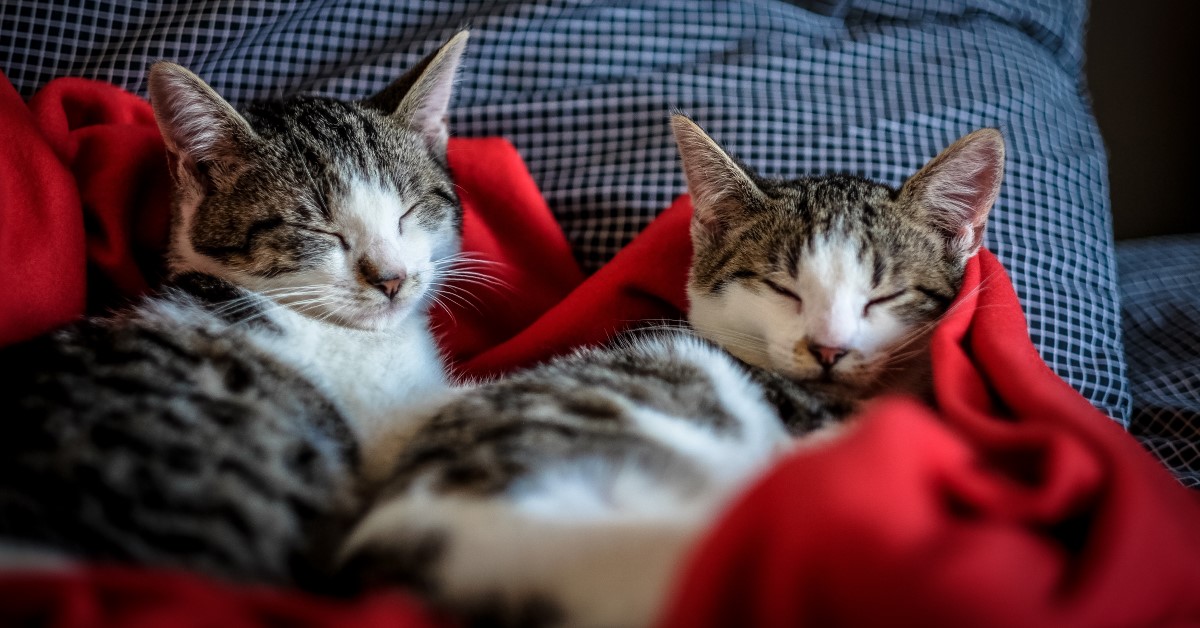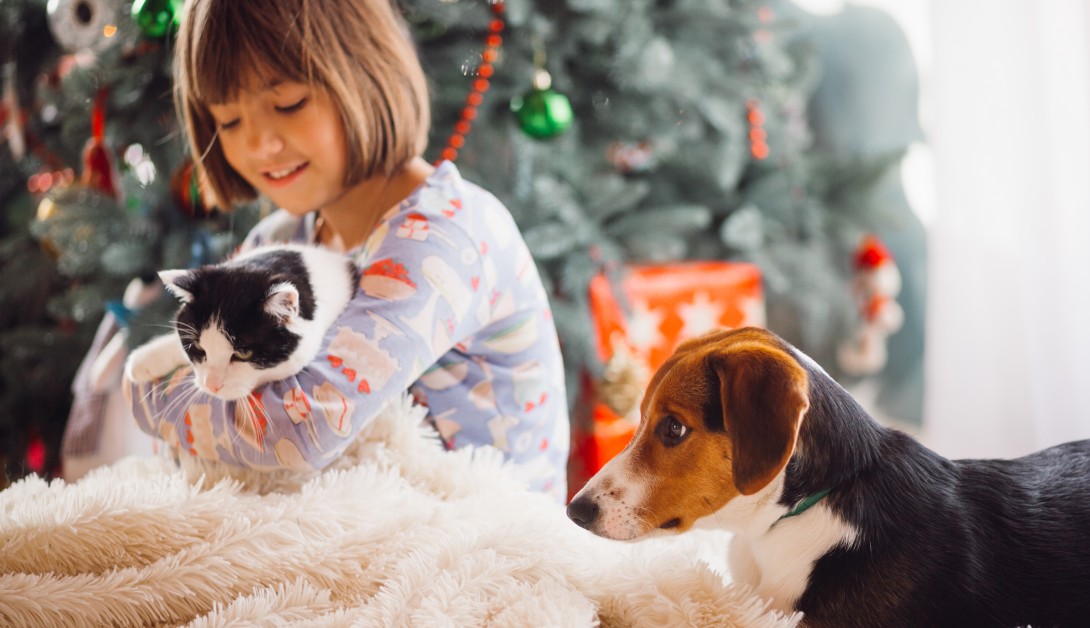Is It Normal for My Cat to Sleep So Much?
It may seem like your cat sleeps all the time, but frequent 'cat naps' are necessary for your pet to recharge.

It's no secret that cats love to sleep. The average feline slumbers 15 hours a day, and some sleep up to 20 hours within a twenty-four-hour period. While a kitten may not sleep as much as a senior cat, it's safe to say that all cats spend a lot of time snoozing. So, is it normal for your cat to sleep so much? Yes. However, there are circumstances in which prolonged periods of sleep in cats could indicate an underlying illness or medical condition.
Normal Sleeping Habits for Cats
You've probably heard the phrase 'cat nap.' This expression originated in the 1800s when people used this term to describe short periods of sleep during the day, similar to the frequent naps taken by cats.
Cats are considered crepuscular creatures. While not precisely nocturnal, crepuscular means that cats are most active during the twilight hours of dawn and dusk. Their sleeping habits are also unique in that cats do not sleep 15 to 20 consecutive hours but rather take short cat-naps throughout the day. Cats tend to be light sleepers, only entering deeper sleep cycles in five-minute spans.
Your cat is hardwired to remain in fight or flee mode, allowing the feline to spring into action at any given time. Sleeping helps cats conserve energy, making it easier to move swiftly when the moment arrives to play or catch prey.
Do Cats Dream?
Since cats sleep so often, you might think that they do a lot of dreaming. However, it is unclear. Scientists do know that cats experience REM sleep, a sleep stage in which humans commonly dream. During REM sleep, you may notice your cat snoring, twitching, hissing, or moving its limbs. Some researchers believe that these movements might be evidence of a dream state.
Reasons Your Cat May Be Sleeping So Much
There are many reasons why your cat sleeps so much that are entirely normal. For example, your cat could be sleeping because he is bored. Animals tend to sleep more while bored, especially when their human companions are not around to socialize. There are plenty of ways to enrich your furry friend's life to cut down on sleeping, such as by providing climbing shelves, building an outdoor catio, or engaging your pet with cat toys.
Cats may also sleep more when they are feeling stressed or scared. Maybe your cat becomes anxious when you leave or is frightened of a new pet or family member in the home. If you feel like stress could be the culprit, look for other signs that could signal that your cat is stressed, such as withdrawn behavior, overeating, sleep disturbances, house soiling, or over-grooming. Your cat could also become less tolerant of people, eat or drink less, or appear restless.
In some cases, cats will sleep more when they are feeling sick or uncomfortable. There is no single illness that causes lethargy exclusively. Instead, fatigue is usually a symptom of an underlying medical disorder. If your cat suddenly sleeps more than usual, it could be due to anemia, arthritis, inflammation, asthma, cancer, diabetes, gastrointestinal disorders, infection, poisoning, neurological disorders, or cardiovascular disorders. Consult with your vet to determine if your cat is suffering from an underlying illness.
If your cat is showing no other symptoms besides sleepiness, you probably have nothing to worry about. Sleeping helps your cat recharge, and proper sleep is critical for your pet's immune system and overall health. If your cat is eating properly, appears healthy, and has an enriched life, there is no need to stress about your cat's odd sleeping patterns. In fact, you may want to join your feline friend for a light cap nap.
A Look at Cat Sleeping Positions
Most people focus on how often or long their cat sleeps. However, this isn't the only indicator of good health and wellbeing. Also, consider how your cat sleeps. Different cat sleeping positions could give you some insight as to how your cat is feeling.
- Curled Up – Is your cat all curled up with her head tucked towards her chest and her tail wrapped around her body? This is one of the most common cat poses. In the wild, animals sleep in this position to protect their vital organs and conserve warmth.
- Belly Up – If your cat sleeps with his belly in the air and body relaxed, it's usually a sign that he feels safe and comfortable in your presence. This is the most vulnerable cat pose as he must give up the urge to remain in 'protect' mode.
- Cat Loaf – The loaf position is when your cat sits upright, tucking her front paws under her body. This pose may indicate that your cat doesn't plan on napping for long but simply needs a quick rest before going on with her day.
- Sideways – Sideways sleepers are similar to belly-up sleepers as the cat feels relaxed and content. Your cat may prefer this pose as it allows him to stretch his limbs and reach a deeper sleep.
- Monorail – This is one of the most interesting cat sleeping positions. Your pet may sleep on a fence post, staircase banister, or other skinny surface that allows her to dangle her arms and legs. This position is perfect for surveillance.
The amount of time a cat spends sleeping will depend on many different factors, such as age, breed, weather, room temperature, health, weight, and hunger. Remember that sleep duration is different for every cat; however, napping is simply in their nature. Get used to your cat getting plenty of shut-eye as this is the cat's way of life.
Ready to start saving money on pet wellness care?
Then take a look at Mint Wellness, the pet wellness plan that provides fast reimbursement on routine pet care. Save on vaccinations, wellness exams, preventatives, dental, and more!
Learn More


